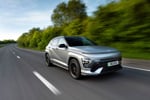China, home to more than one billion people, is heading the crusade as it plans to convert almost 10,000 public transport vehicles to liquefied petroleum gas (LPG). With concern about whether oil reserves are enough to meet the world’s needs in the long term, there is uncertainty about the impact China’s growing car market will have. Within years it could become the largest car market in the world, dwarfing the US and Europe and eating up vast quantities of fuel reserves.
Although by European standards a 10,000-vehicle fleet is large, in China it is relatively small.
Guangzhou, the capital of south China’s Guangdong province, is aiming to run all its taxis and buses on LPG by the end of next year. The move follows pressure from the Government as vehicle emissions have been identified as the primary source of urban pollution.
The 2,390 buses and 7,520 taxis will be in operation within three months but the Government is also aiming to introduce compressed natural gas (CNG) by the end of 2008.
Japan is also flying the green flag as it has just embarked on a new hydrogen-powered vehicle trial.
Parcel delivery group Federal Express is testing a new hydrogen car for General Motors (GM) in Tokyo. The vehicle, a GM Zafira, uses HydroGen3 fuel cell technology and the manufacturer hopes it will be widely available by 2010.
Asia is not the only one pushing green transport. Globally there are a number of initiatives taking place, including:













Login to comment
Comments
No comments have been made yet.